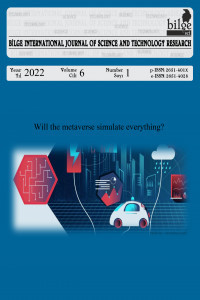Reading The World With Statistical Literacy: Results of An Emprical Study
Reading The World With Statistical Literacy: Results of An Emprical Study
Critical Interpretation, Critical Thinking, Linear Regression, Logistic Regression, Statistical Literacy,
___
- Board of Education (2017). Retrieved from: https://ttkb.meb.gov.tr/meb_iys_dosyalar/2017_07/18160003_basin_aciklamasi-program.pdf.
- Carmines, E. G., & Zeller, R. A. (1979). Reliability and validity assessment. Sage publications. Engel, J. (2017). Statistical literacy for active citizenship: A call for data science education. Statistics Education Research Journal, 16(1), 44-49. https://doi.org/10.52041/serj.v16i1.213.
- Gal, I. (2002). Adults' statistical literacy: Meanings, components, responsibilities. International statistical review, 70(1), 1-25. https://doi.org/10.1111/j.1751-5823.2002.tb00336.x.
- Gal, I. (2004). Statistical literacy. In The challenge of developing statistical literacy, reasoning and thinking (pp. 47-78). Springer, Dordrecht. https://doi.org/10.1007/1-4020-2278-6_3.
- Ministry of National Education (2017). Retrieved from: https://ttkb.meb.gov.tr/meb_iys_dosyalar/2017_07/18160003_basin_aciklamasi-program.pdf.
- Ojose, B. (2011). Mathematics literacy: Are we able to put the mathematics we learn into everyday use. Journal of mathematics education, 4(1), 89-100. https://doi.org/10.12691/education-7-10-1.
- Shields, M. (2005). Information literacy, statistical literacy, data literacy. IASSIST quarterly, 28(2-3), 6-6. Retrieved from:https://iassistquarterly.com/public/pdfs/iqvol282_3shields.pdf.
- Şahin, F. (2012). A study for development of statistical literacy scale for undergraduate students (Doctoral dissertation, Boğaziçi University. Retrieved from: https://toad.halileksi.net/sites/default/files/pdf/lisans ogrencileri-icin-istatistiksel-okuryazarlik-olcegi-toad.pdf.
- Tabachnick, B.G., Fidell, L.S. (2013). Using Multivariate Statistics (sixth ed.) Pearson, Boston.
- Taylor, S., and Wagland, S. (2011). Financial literacy: A review of government policy and initiatives. Australasian Accounting, Business and Finance Journal, 5(2), 101-125. Retrieved from: https://ro.uow.edu.au/aabfj/vol5/iss2/7/.
- TDK, Turkish Language Association (2022). Retrieved from: https://sozluk.gov.tr/ .
- Turkish Surveying Index (TOAD) (2022). Retrieved from: https://toad.halileksi.net/ .
- UNESCO, United Nations Educational, Scientific and Cultural Organization (2022). Retrieved from: http://uis.unesco.org/en/glossary-term/literacy.
- Wilkins, J. L., Zembylas, M., and Travers, K. J. (2002). Investigating correlates of mathematics and science literacy in the final year of secondary school. In Secondary analysis of the TIMSS data (pp. 291-316). Springer, Dordrecht. https://doi.org/10.1007/0-306-47642-8_18.
- Yoon, J. (2009). The Development of Media Literacy in Russia: Efforts from Inside and Outside the Country. Issues in Information and Media Literacy, 1, 189-213.
- ISSN: 2651-401X
- Yayın Aralığı: Yılda 2 Sayı
- Başlangıç: 2017
- Yayıncı: Kutbilge Akademisyenler Derneği
Reading The World With Statistical Literacy: Results of An Emprical Study
Deniz ÜNAL, Begüm ÇIĞŞAR, Dibanur ALAM, Şerife Ezgi ATALAR, Sait İsmail GÜMÜŞ, Ali ÇAKITLI
Murat SOLAK, Rüya TEKİN KARAKÖSE
Zafer KAYA, Sait Dündar SOFUOĞLU
Emrah BOZKAYA, Tamay BAŞAĞAÇ GÜL
Prediction of Turkish Constitutional Court Decisions with Explainable Artificial Intelligence
Tülay TURAN, Ecir KÜÇÜKSİLLE, Nazan KEMALOĞLU ALAGÖZ
A Bibliometric Analysis of Wearable Health Technology Research
Effective Dye Adsorption with Cross-linked Hexagonal Boron Nitride Spheres
